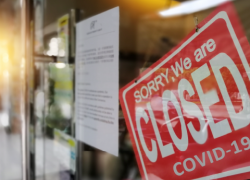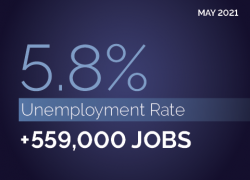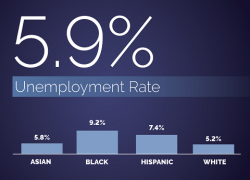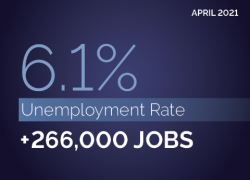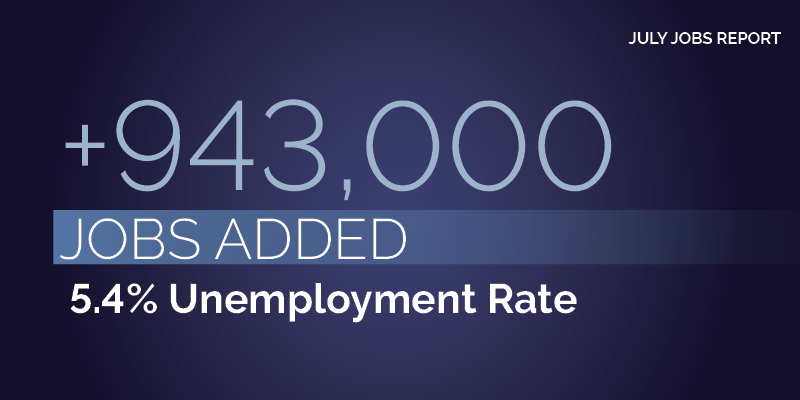
There was a lot to like in the Bureau of Labor Statistics’ latest jobs report: Employment rose by 943,000, the unemployment rate dropped to 5.4% and hundreds of thousands of people rejoined the workforce in industries all across the economy. These are all major improvements from the heights of the spring 2020 recession. While we see continuing progress in the labor market, we still have a ways to go before we return to pre-pandemic employment strength.
Here are five numbers to help put the latest report in context.
+832,000
Over the past three months, the economy has added an average of 832,000 jobs per month – the fastest job growth since August 2020. That’s a sign that economic confidence is returning, even as concerns about the pandemic linger.
0.5
The unemployment rate dropped 0.5 percentage points in July, and for all the right reasons. Sometimes we see a dip because people give up on looking for jobs, but the labor force participation rate and employment-to-population ratio are both up. That tells us that people are looking for work and finding jobs.
75%
We’ve reached an important milestone in our steady recovery of the jobs we lost in March and April 2020: We’ve recovered 75% of those jobs. Our next task is obvious: We must continue to work to restore the remaining 25%.
8.2%
As I’ve said many times before, economic recovery isn’t equal across demographics – and positive news for the nation doesn’t automatically translate into positive news for individual communities. The Black unemployment rate is still too high at 8.2% and the Hispanic unemployment rate is also higher than full employment levels at 6.6%. These trends mirror what we’ve seen in previous recessions and recoveries, but I firmly believe that more inclusive policies are key to economic recovery.
2.5 million
Despite the fact that the number of unemployed people fell by 782,000 to 8.7 million in July, long-term unemployment is still far too high. More than 3 million people have been out of work for at least 27 weeks, with 2.5 million of those out of work for 52 weeks or more. Black workers are overrepresented in this population.
The path forward
What does the path forward look like? Here are a few factors to keep your eyes on: equity, public policy and public health.
The Biden-Harris administration’s commitment to racial equity and inclusion will be key to ensuring an equitable recovery. At the Department of Labor, we’re throwing our weight behind that work to make sure that the economic recovery reaches all Americans.
The public sector has played a critical role in getting America back to work, and July’s report showed 240,000 new jobs added in government – but we’ll need more public sector growth to continue to fuel our recovery.
Lowering COVID-19 transmission rates will be key to restoring worker and consumer confidence. If you haven’t gotten a vaccine yet – or know somebody who needs to schedule an appointment – you can find a vaccination site near you at vaccines.gov.
There’s still plenty of work to do. If we continue adding jobs at the current pace, it would still be another nine months before we return to pre-pandemic levels, so we’re not ready for a victory lap just yet. Even so, July’s jobs report has a lot of promising indicators. We have made historic progress, thanks in large part to vaccinations, sound economic policy and the resilience of America’s workers. We’re still jogging uphill – but the view from here looks better all the time.
Janelle Jones is the chief economist of the U.S. Department of Labor.

 U.S. Department of Labor Blog
U.S. Department of Labor Blog
